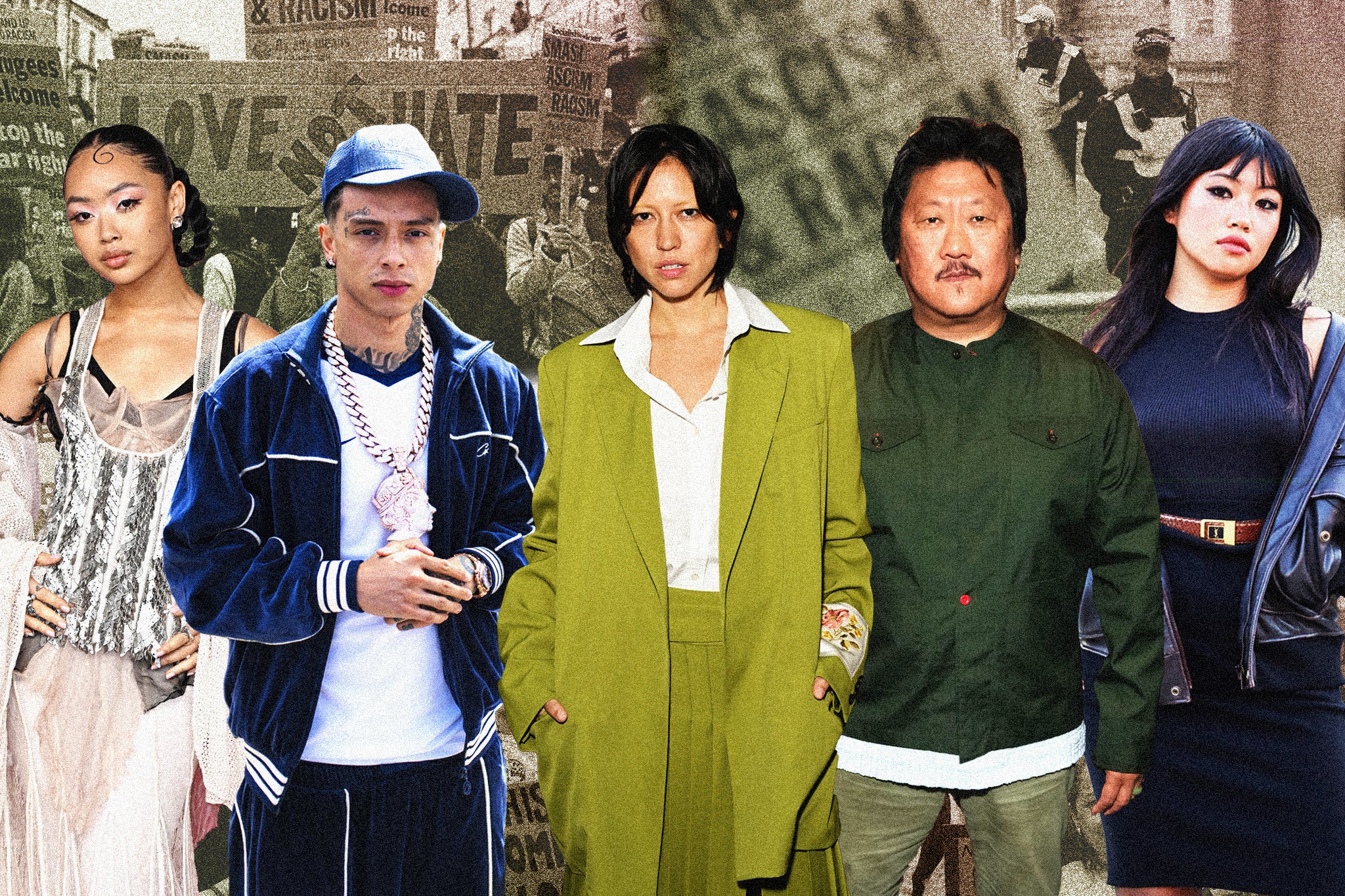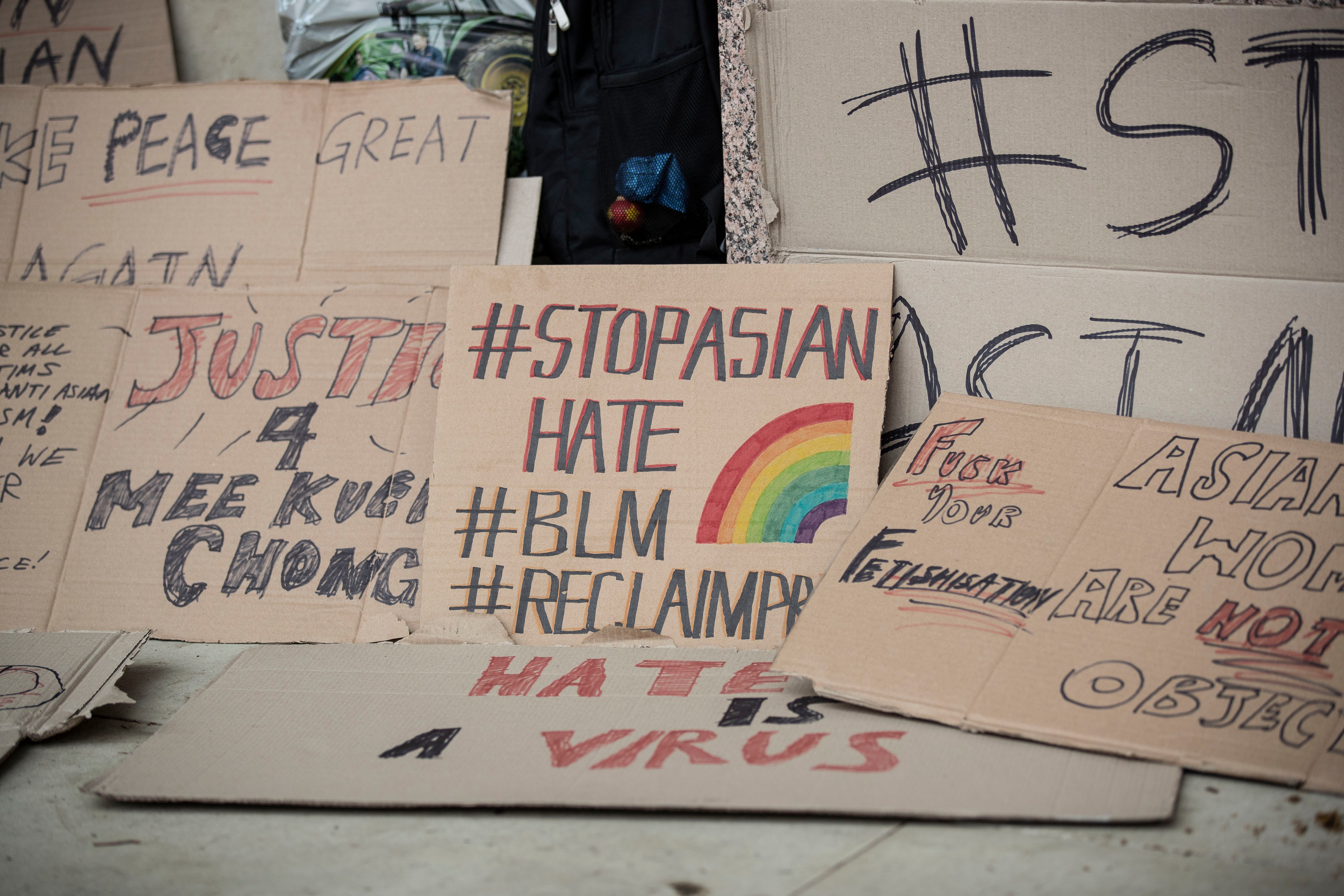The conversation about race we’re not having, but really should be having
As the debate around immigration and racism continues to rage, there is one group which is often overlooked – even when they are at their most visible. Here, Zing Tsjeng asks why there is so much silence around the east and southeast Asian communities in the UK who face discrimination on a daily basis…

When I grew up in the UK as a teenager, I’d usually wait months before I saw a single east or southeast Asian (ESEA) face on TV. I clung to the few Asian faces that I saw in NME and filed them away for reference. I have Karen O, the Korean-American frontwoman of the indie band Yeah Yeah Yeahs to thank for the truly tragic fringe I once had done.
Today, British east and southeast Asian representation is everywhere. At this year’s Glastonbury, you could catch London-born rappers Natty Wylah and Jianbo and dance to DJs including Oh Annie Oh and Ying.
Jamaican-Chinese singer Griff’s critically acclaimed new album Vertigo came out in July. Filipino-born Beabadoobee, who has headlined Radio 1 Big Weekend and supported Taylor Swift, has just dropped her third album This Is How Tomorrow Moves.
Central Cee – probably the most talked-about British rapper right now – is of Guyanese, Chinese and English heritage. In September, Margins United, the first music festival celebrating alternative east and southeast Asian culture, makes its debut in London, as does the ESEA Lit Fest which is being held at the Southbank.
On TV, British-Japanese actress Sonoya Mizuno burned up screens on HBO’s House of the Dragon. Salford’s finest, Benedict Wong, was one of the big leads in Netflix’s big-budget project sci-fi epic 3 Body Problem and A24 has found incredible success with shows and films all centering the Asian experience – Beef, Past Lives, The Farewell and the Oscar smash hit Everything Everywhere All at Once.
So, on the surface, it feels like it’s good news. Until you realise all is not quite as it seems. Watching two recent Instagram videos of people in London being challenged to name a single ESEA actor or musician they all failed failing abysmally. “It wasn’t surprising,” sighs The Bitten Peach co-founder Shane “ShayShay” Konno, a cabaret artist who hosted one of the videos for the ESEA community group Red Flagged. “Even the Asian people we asked struggled.”
“It’s quite obvious to me that we’re still left out and not thought of as being part of British society,” says Viv Yau, one of the co-founders of the grassroots community organisation besea.n. “The example I always go back to is the BBC Asian Network. It predominantly caters for south Asian audiences – nothing like that exists for us, even though we’re technically Asian.”
This invisibility – even when we are at our most visible – is the result of a historical legacy from our immigration story that isn’t widely told.
“The history of [ESEA] immigration to the UK is inherently invisible, the ramifications of which we guess we still see today,” explains Dan Tsu, an educator and events programmer, citing the 140,000 Chinese labourers who were recruited to serve in the Second World War by way of example. “They were doing the s***tiest jobs – clearing up bodies from No Man’s Land, really hard menial labour. And then they weren't even recognised for the work that they did.”
Yau, who grew up working at her parents’ Chinese takeout in Warrington, said it took reading Angela Hui’s book Takeaway: Stories from a Childhood Behind the Counter to realise that her experiences weren’t unique to her family or background. “I grew up stupidly thinking every British Chinese person I met came from a takeaway because that’s all I knew,” she says. “That just shows what happens in a small town when you have a lack of connection with other ESEA people.”

Annie*, who came to the UK from Singapore to study journalism and went on to senior positions at heavy-weight fashion publications such as ID and Dazed and Confused, still remembers visiting her new husband’s home town in the northeast and “everyone assumed I was either a Thai bride or working at the Chinese”.
But there is also a flip side to this coin – a model minority myth – the alternative idea that Asian people are relatively high-achieving and successful and, by implication, have no reason to complain about anything.
This misconception often accompanies the stereotype that we are quiet, meek and uncreative, preferring jobs in medicine or engineering (when we’re not working in the Chinese takeaway of course). It is something Annie then experienced with her children at schools in London. “The assumption was that they would be brilliant at maths and science, but, in fact, art was their great passion, which apparently was a big surprise to some of the teachers.”
It is a tale I hear repeatedly. We’re considered a model minority in some fields but an alien outsider in others. Relying on crass stereotypes only serves to obscure the huge amount of variation among us.
Though people of Chinese heritage make up much of the ESEA community, the UK is home to those with Japanese, Korean, Indonesian, Malaysian and Singaporean heritage and more. While we are seen as a big homogeneous mass – a working-class takeaway kid who was born to Hong Kong parents – as Yau was – will have very different life experiences from a newly arrived, middle-class student from China or Singapore like Annie.
And as a group, we are hardly mentioned in the immigration conversation at all, despite many of the difficulties we face. For all the Conservative rhetoric of curbing immigration, some 200,000 or so Hongkongers have relocated here since 2021 on the BN(O) visa scheme set up by Boris Johnson after China introduced a crackdown on dissent in Hong Kong.
This invisibility – even when we are at our most visible – is the result of a historical legacy from our immigration story that isn’t widely told
Many have moved with their school-age children and settled in London, Greater Manchester and the West Midlands, creating pockets of Hongkongers across England. Despite being nearly twice as educated as the average person in the UK, only around half of them are currently employed and many of those who are employed aren’t in jobs which match their skills or qualifications.
One thing that many ESEA people do have in common is the experience of living through coronavirus. The rise in Covid-related hate crime was the turning point in our relationship with our own identity, as well as the heavily criticised conflation of coronavirus with ESEA people of Chinese heritage. (Think: photos of London’s Chinatown used to illustrate terrifying news about the virus spreading.)
“There were so many of us who were so frustrated and then started to make the links between the rise in hate crime [a nearly 70 per cent spike in 2020] and the absence of real, positive representation of us,” Tsu states.
Even now, the educator says that he talks about the challenges faced by the community to a divided response. “Half the room will be like ‘that’s exactly my experience, thank you’ and then the other half of the room will be like, ‘Why are you being so miserable?’” he recounts. “It’s simply that half the room still needs to do the work, and not in a bad way. If you asked me this question, more than five years ago, I’d be like, ‘What? I’m fine, I’m cool.’ It takes people time to catch up and process that stuff.”
“That stuff” is often painful and requires some degree of personal excavation. I moved to the UK from Singapore as a naive 16-year-old and when I look back on my experiences here – the absurd microaggressions around my ability to speak English at school and on the street, for instance – I feel sorry for the younger me, who lacked the vocabulary to understand that what was happening was wrong.
Even now, I sometimes feel compelled to downplay the racist verbal abuse I’ve experienced. To use a word from my dad’s Hokkien dialect, I feel paiseh – or sheepish. Shouldn’t I feel grateful that it wasn’t worse?
But research shows that these aren’t isolated incidences. A report from the University of Leicester shows that 45 per cent of ESEA people have experienced a hate crime in the last year, but trust in the authorities was so low that only 10 per cent reported it to the police.

This discrimination is only the tip of the iceberg. According to a 2021 report submitted to the government commission on race and ethnic disparities, ESEA people only occupy 0.27 per cent of the most powerful positions in government, the private sector, sport and the media, far below the proportion we occupy in the population, which is around 1 per cent – although this figure is widely thought to be an underestimate.
In the face of institutional gatekeeping, plenty of ESEA people are simply choosing to go at it themselves. Konno’s performance collective The Bitten Peach is now celebrating its fifth year with an Underbelly residency at the Edinburgh Fringe. Tsu, who also programmes music at the Glastonbury stage Rum Shack, was responsible for getting Asian acts on the lineup and intends to keep working with the industry nonprofit ESEA Music to do so.
After petitioning the government to recognise ESEA Heritage Month, besea.n decided to hold it themselves and rely on funding from Asian-owned businesses. “It’s more sustainable for us to lean our gaze inwards, toward the people that we want to serve,” Yau explains, adding that they encourage those who want to support the community to turn up for events, volunteer and get involved.
While the ESEA experience hasn’t been a hugely visible part of the anti-racist protests, the recent far-right riots may galvanise people into more direct anti-discrimination action, particularly given the attack of two Filipino nurses during a riot in Sunderland.
On Instagram, Yau’s organisation besea.n called on their followers to come together and show cross-community support. “These riots do not happen in a vacuum,” their post read. “Racism is deeply embedded in our media and institutional policies.”
For now, community groups and organisations are continuing to build a movement that they hope will one day help ESEA people truly break into mainstream consciousness in the UK. However, the work that goes on behind the scenes to uplift a community is often thankless and unseen, Yau says sadly. “The people behind the scenes aren’t recognised enough,” she adds. “That is part of the legacy [as a community] too.”
Despite this heartache – I have to believe that the conversation is slowly changing, thanks to those organising at a grassroots level, collaborating with like-minded peers and choosing to support ESEA events, artists and businesses. The real question, then, is whether society is ready to have that conversation with us.




Join our commenting forum
Join thought-provoking conversations, follow other Independent readers and see their replies
Comments